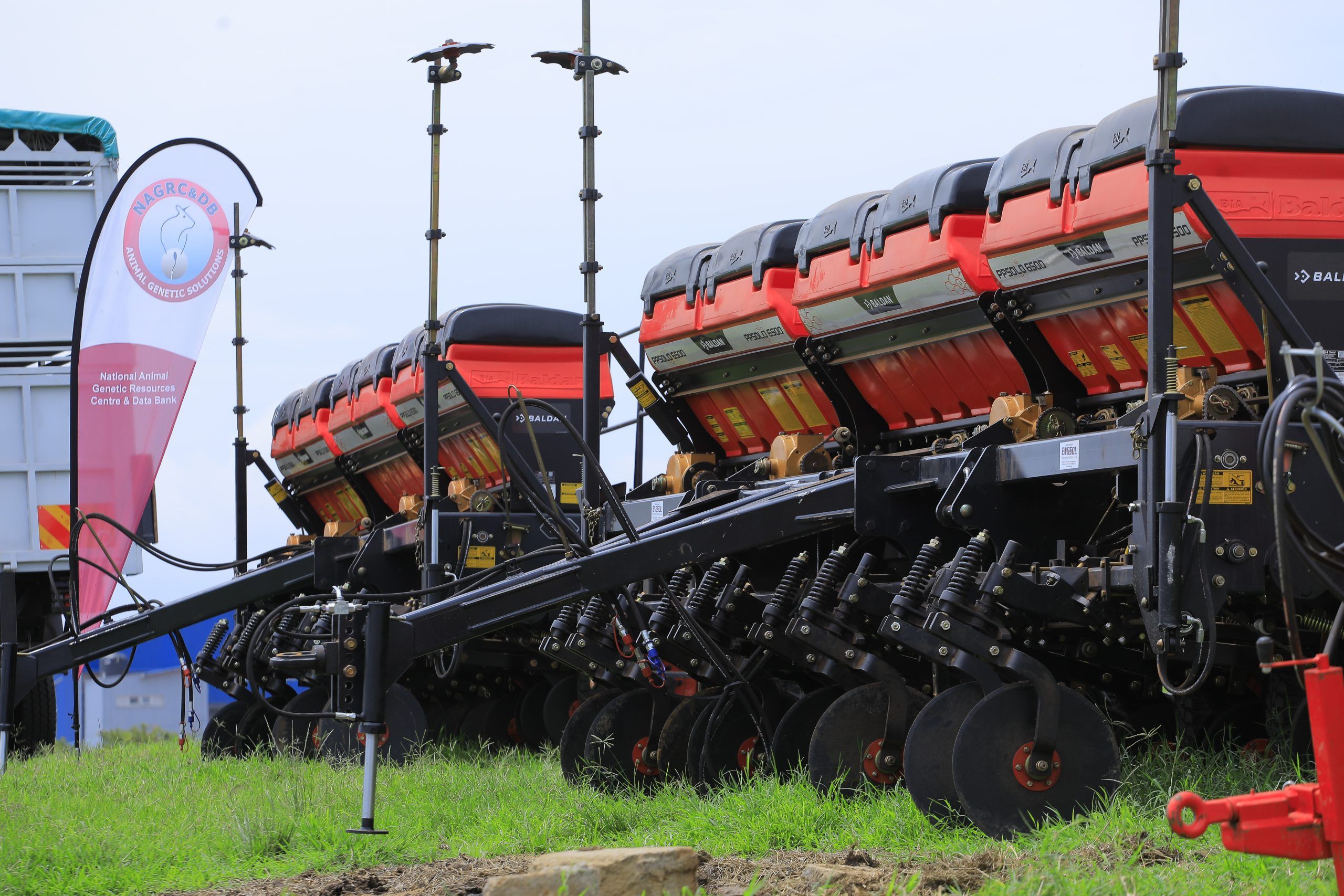
NAGRC&DB Launches Advanced Feed Production and Harvesting Machinery to Boost Uganda’s Livestock Sector
NAGRC&DB Embarks on Extensive Mechanized Animal Feed Production to Support Animal Seed Multiplication Across Uganda
The National Animal Genetic Resources Centre and Data Bank (NAGRC&DB), an agency of the Ministry of Agriculture, Animal Industry, and Fisheries, has launched an ambitious mechanized initiative to increase the availability of high-quality animal feeds, essential for supporting extensive breeding efforts and sustaining livestock agro-enterprises throughout Uganda. Known for its role in delivering high-quality breeding stock of poultry, cattle, goats, pigs, and fish through its Community-Based Breeding Outreach Program (CBBOP), NAGRC&DB has extended its focus to mechanized animal feed production to combat the ongoing challenges farmers face in providing year-round nutrition for livestock.
Addressing the Nutritional Challenges of Uganda’s Livestock Industry
Livestock farming in Uganda is a powerful tool for economic empowerment but requires consistent, high-quality animal feed, particularly given the climate-related challenges of prolonged droughts and unpredictable rainfall. “Animal nutrition is the highest single-cost driver in livestock-based agro-enterprises, accounting for as much as 85% of total production costs,” shared NAGRC&DB’s Executive Director. With limited mechanization in the past, farmers often struggled to meet this nutritional demand, stifling the profitability of many livestock businesses.
In response, NAGRC&DB was authorized in 2022 to produce large-scale animal feed under the government’s food and animal feed security program, initiated by H.E. The President of Uganda. Despite minimal mechanization and the absence of irrigation systems, NAGRC achieved remarkable results, producing 51,692 metric tonnes of corn silage, 9,263 metric tonnes of corn grain, and 192 metric tonnes of soybean across approximately twelve square miles of farmland, including Aswa, Got Apwoyo, Maruzi, Lusenke, Kasolwe, Rubona, Ruhengyere, Sanga, and Nshaara ranches.
This initial success in feed production allowed NAGRC&DB to distribute animal feeds at subsidized rates, including compounded poultry, piggery, and dairy cattle feeds at UGX 1,500 per kg, corn silage at UGX 500 per kg, and Chloris gayana hay at UGX 10,000 per 17 kg bale. The significant reduction in feed costs helped mitigate the financial burden on farmers, enabling more sustainable livestock farming practices.
Scaling Production with State-of-the-Art Machinery
To expand its animal feed production capabilities, NAGRC&DB has now acquired cutting-edge machinery, including heavy-duty agricultural tractors (155hp), tipper trailers, precision row planters, long-range boom sprayers, and forage harvesters. These high-capacity tools will be critical in cultivating feed ingredients like maize and soybeans on a massive scale. “This advanced agricultural equipment will significantly boost our capacity to produce high-quality feed ingredients, which we will use in our processing plants, particularly our Kasolwe stock farm plant, now capable of processing 75 metric tonnes of feed per day,” stated the agency’s agricultural engineer.
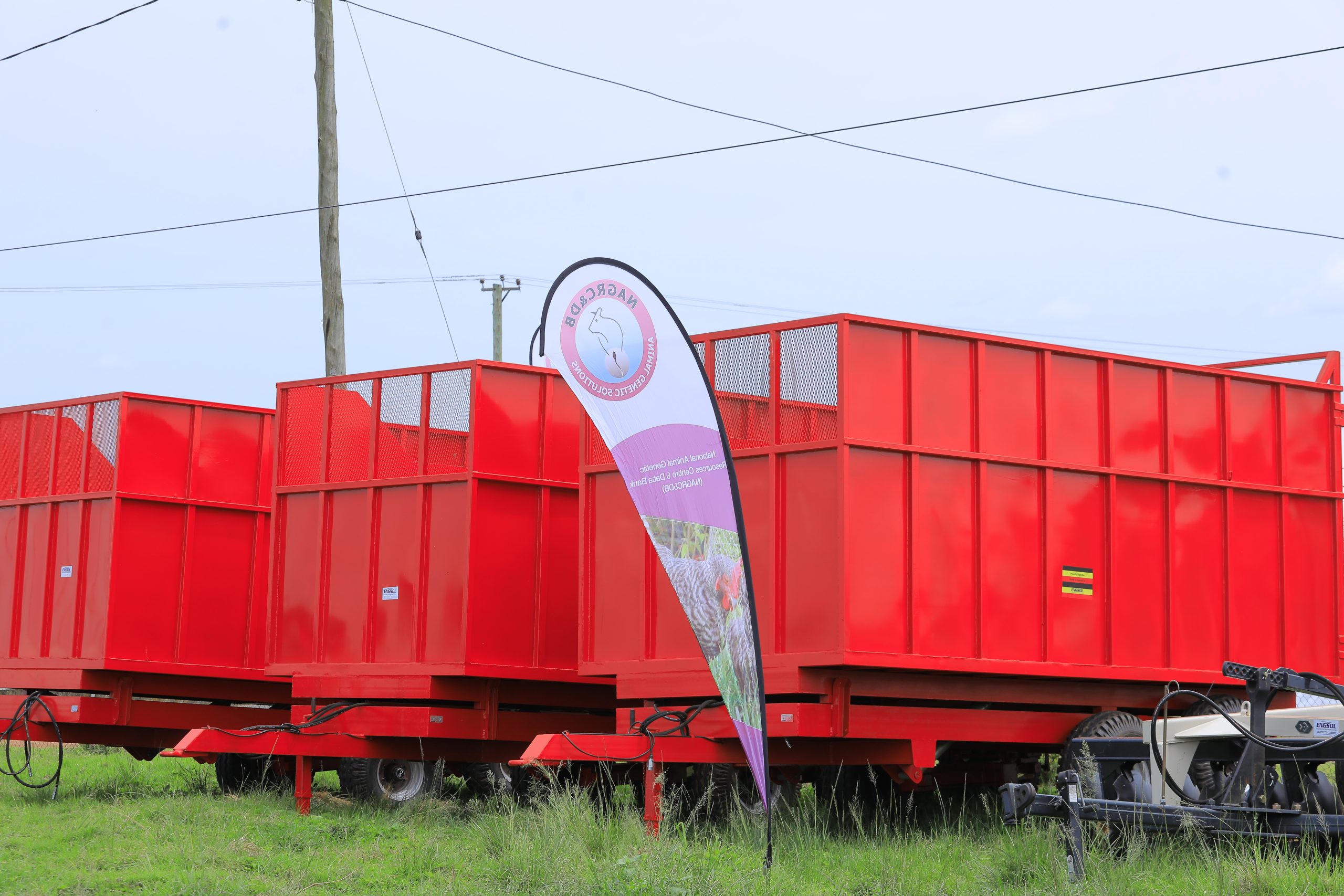
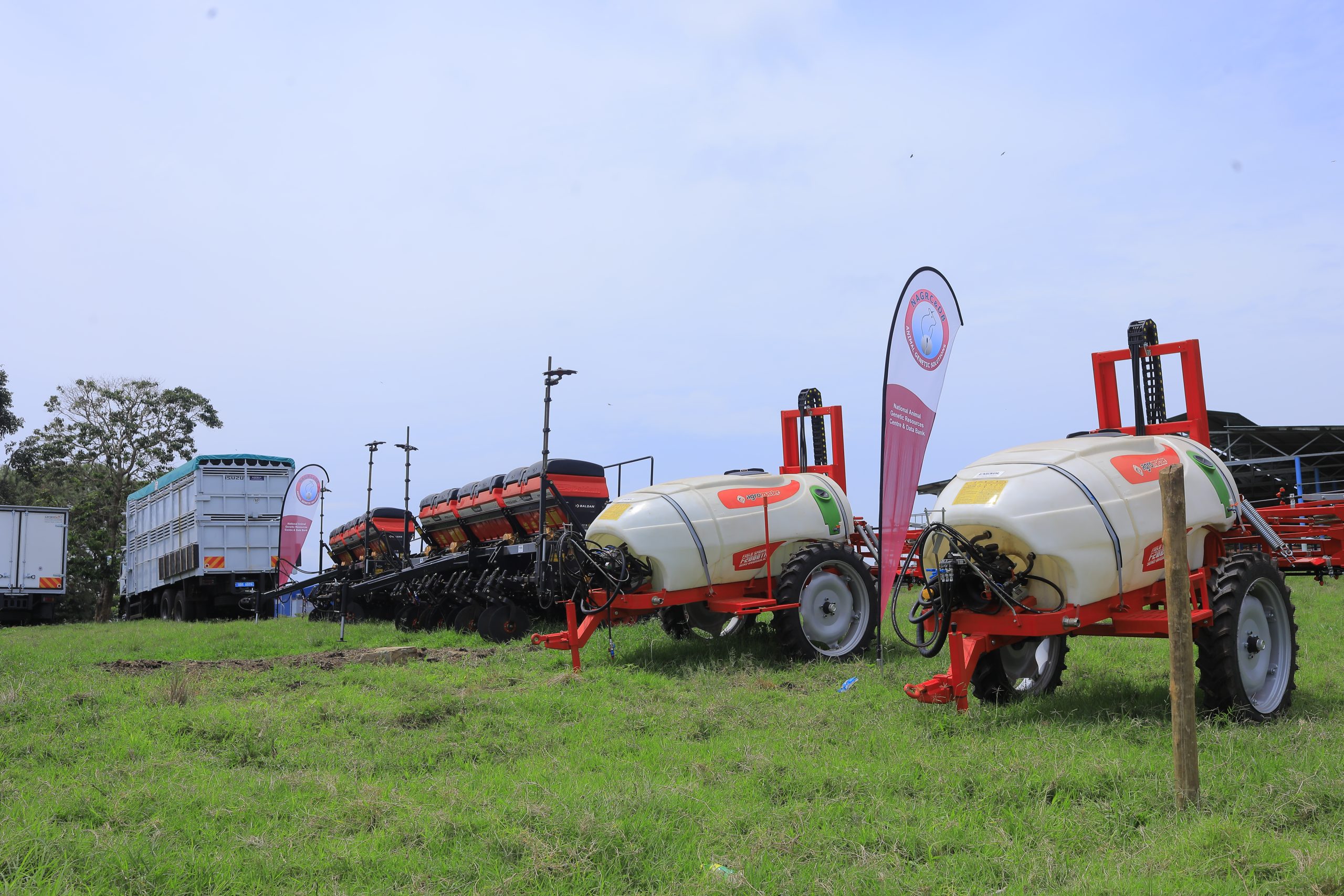
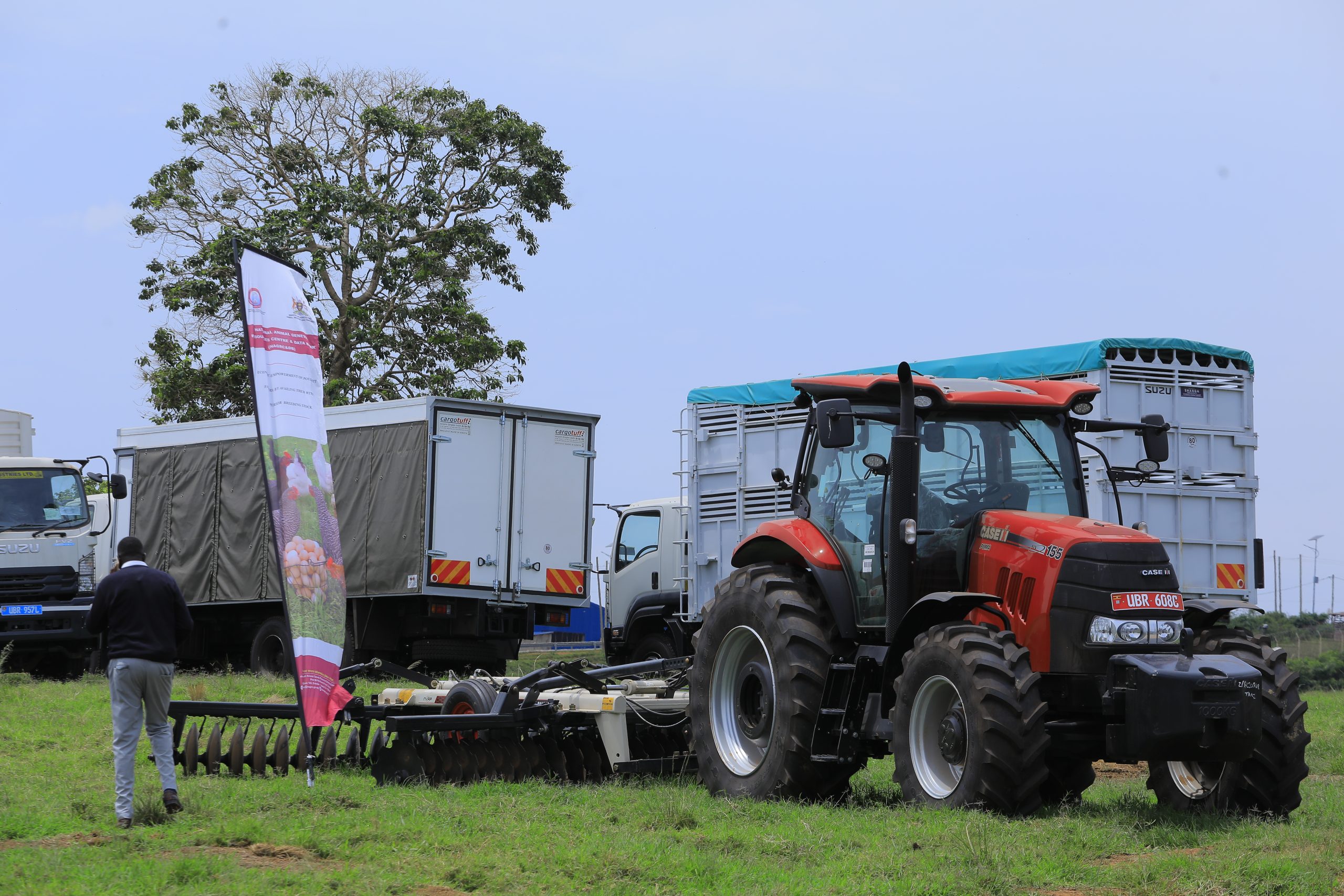
This mechanized approach will not only enhance feed production but also support NAGRC’s goal to provide extensive breeding stock to Ugandan farmers. This includes offering initial feed at no cost for the first six months to help farmers stabilize and establish their agro-enterprises. “With this machinery, we are positioned to produce sufficient feeds to support our accelerated livestock breeding programs and sustain our beneficiaries’ enterprises,” affirmed the Executive Director.
Scaling Breeding Stock through the Community-Based Breeding Outreach Program (CBBOP)
NAGRC’s Community-Based Breeding Outreach Program aims to empower livestock farmers through the provision of quality breeding stock and a reliable supply of animal feeds. Through CBBOP, NAGRC plans to annually distribute six million day-old multi-purpose chicks, 100,000 fast-growing piglets, 2,000 dairy cattle crosses, 2,000 beef cattle crosses, 8,000 meat goat crosses, and ten million fish fingerlings, all at subsidized prices.
NAGRC’s commitment to providing affordable breeding stock and high-quality feed aligns with Uganda’s Parish Development Model (PDM), which seeks to boost local productivity through improved livestock breeding. “Our mechanized approach will ensure a stable supply of breeding materials, supporting the Parish Development Model and helping rural farmers thrive,” commented the Chairman of the Board of Directors, Mr. Ben Anyama.
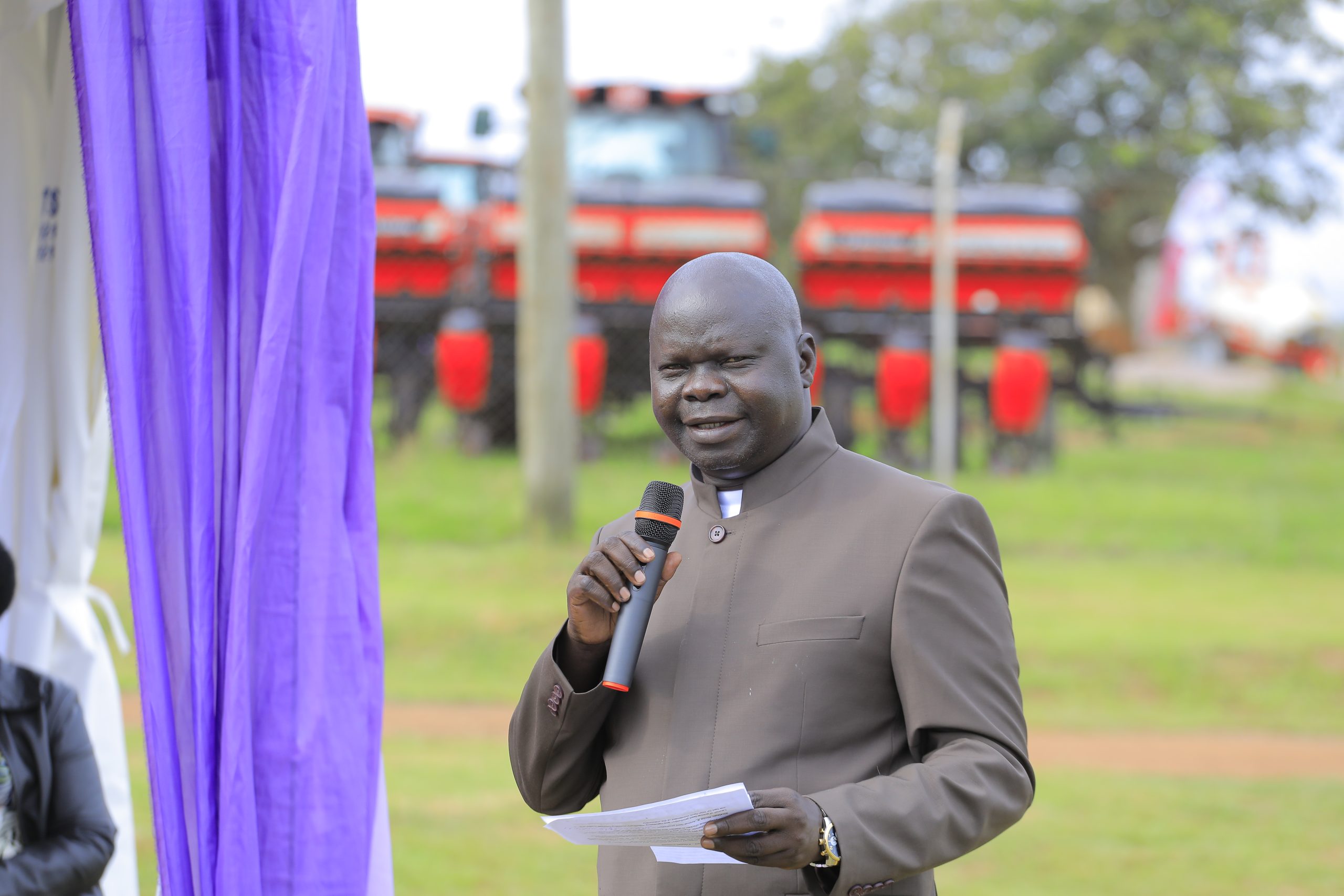
Sustainable Livestock Development: Remarks from the Minister of State for Animal Industry
At the recent launch, the Minister of State for Animal Industry, Lt. Col. (Rtd.) Dr. Bright Kanyotore Rwamirama, outlined key elements for sustaining Uganda’s livestock industry. “Our responsibility in achieving effective commercial livestock production requires us to consider factors like selecting the right genetics, ensuring optimal nutrition, and maintaining animal health to create resilient breeds,” he said. He emphasized the importance of agro-industrialization in advancing Uganda’s agricultural sector, aligning with the broader vision of “garden to spoon” food production.
The Minister also highlighted the significance of preserving the newly acquired equipment, ensuring its role in maintaining feed supply, and safeguarding the longevity of Uganda’s livestock industry.
A Forward Path for Livestock Agro-Industrialization
With mechanized feed production and a strategic breeding outreach program, NAGRC&DB is advancing Uganda’s livestock sector toward greater resilience, economic stability, and food security. This large-scale initiative not only supports existing farmers but also invites new participants to enter the sector with the assurance of affordable, quality breeding stock and feeds. By addressing the key challenges facing the livestock sector, NAGRC&DB remains committed to transforming Uganda’s animal agriculture landscape for a sustainable future.
“Our mission is to equip farmers with the right resources, support economic growth, and secure Uganda’s position as a leader in livestock production,” concluded the Executive Director, reaffirming the agency’s dedication to the nation’s livestock farmers and the future of Ugandan agriculture.
